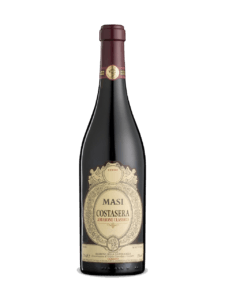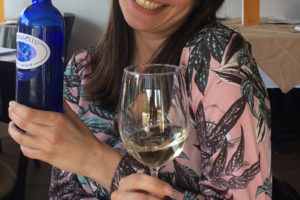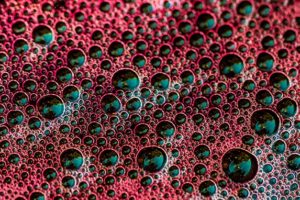https://www.instagram.com/p/B27B-fFFP-r/?igshid=ssgyro7zd042
It’s only 10:55 a.m., but the 17 glasses in front of me, each filled with an ounce of wine, elicit a slight drool.
We’re moments away from the two-hour trade seminar and guided tasting portion of Grandi Marchi. A collaboration of 19 prestigious winemaking families from across Italy, the raison d’etre of the Grandi Marchi is to educate, showcase and promote the exceptional diversity and quality of Italy’s viticultural splendour. Innovators and award-winners in their respective regions, the seminar attendees at Toronto’s Royal Ontario Museum Sept. 19 demonstrated that there’s ample reason for wine enthusiasts to explore that diversity.
“The great thing about the wine industry now, compared to 10-20 years ago, is that people are more curious,” says Christine Hammond, U.S. Brand Manager of Sicily-based Tasca D’Almerita. “People will open up a menu and try a Nero D’Avola, whereas 10 years ago they would never have ventured beyond Chardonnay, Cab or maybe Syrah.”
Sicily is a world of diversity unto itself, Hammond notes. “It’s the largest island in the Mediterranean, but it could not be more different from what the perception is of beaches, a very hot climate and lots of dusty, oxidized whites. Two major mountain ranges run through the middle of the island. You can go from the city of Catania on the coast and in an hour and a half be on Mount Etna, where you’re on a live volcano where it could be hailing. You can swim and ski on the same day. Our Regaleali Estate ranges from 400 to 900 metres. We get snow in the winter!
“The other fun fact is that Sicily is the only region in the world where you can harvest 90 days in a row!” Hammond explains. “We start in the west with Grillo (white wine grapes) on the little island of Mozia, and end on Mount Etna in November. So we start earlier and end later, which also shows the diversity we have in grapes and styles.”
Wine consultant Michael Fagan, the managing director of Uncork1 Inc. and former host to the LCBO’s Discover series, has travelled extensively through Italy’s varying wine regions. “I think for people trying to discover new regions and new wines, you always have to be curious,” echoes Fagan, who moderated Toronto’s Grandi Marchi seminar. “One of the things that guides many consumers is travel—you remember and associate certain wines with places you’ve visited. But for places like Sicily and Sardinia, it’s an investment to get there—they’re just harder to get to. But once you’re there, these areas are so beautiful. And the range of wines produced is immense. Sadly, production used to be focused on quantity rather than quality. But fortunately the new generation of winemakers there are changing that completely. And if you want extremely good value for red and white wines, these are great places to start, such as Cannonau (red wine) in Sardinia. I find for consumers who maybe prefer more New World wines that are richer and more fruit-driven, this is a great transition point, because these areas have the fruit and the body, but still have the acid that makes them fresh. Easy to drink on their own, but great food wines too.”
Here’s a collection of what caught my eye from this year’s Grandi Marchi:
SUSTAINABILITY
As a whole, this group is seriously committed to biodiversity, organics and sustainability. Take, for example, Lungarotti winery in Central Italy’s Umbria region. Export Manager Francesco Zaganelli noted how this 60-year-old winery has received prestigious V.I.V.A. certification. The Italian acronym for “Evaluation of the Impact of Viticulture on the Environment,” this wine-industry-specific honour is implemented by Italy’s Ministry of the Environment. Lungarotti, after an extensive two-year approval process, became just the ninth Italian organization to achieve V.I.V.A. status—and the first in Umbria. Their chemical-free practices range far beyond the use of organic fertilizer. For example, residues from winter pruning are collected, chipped and burned to obtain heat for producing steam to wash and sterilize the bottling line, as well as hot water to heat certain departments of the winery, including malolactic fermentation in barrique cellars, the warehouse and offices.
I also love the commitment to biodiversity at Col D’Orcia winery in Montalcino, Tuscany (located at sort of the kneecap above the Italian boot). Certified organic in 2010, only 15% of the surface area of this landscape is covered in vines, leaving plenty of land for insects, flora and fauna to prosper. This is serious Brunello wine country here, with a diverse group of winemakers mastering the elegant, acid-rich characteristics of the Sangiovese grape. But climate change has reared its head in this region, with the early-ripening Sangiovese clone created 30 years ago now in need of an updated version that ripens later and can withstand the heat waves of modern times.
THE BERRY SPA
Another cool tidbit from the seminar was the ‘berry spa’ of Ca’ del Bosco winery in the Franciacorta region of Lombardy, bordering Switzerland. Each bunch is carefully selected before being pampered in an exclusive air-bubble whirlpool-like system that incorporates three soaking tanks. The cleaner the grapes, the purer the wine, they figure. And while they’re 75% organic already, the process also helps remove sulfites, and ensures that the grapes are perfectly dry before going to the press. More juice and less water equates to a purer final product.
 MARVELLOUS MASI
MARVELLOUS MASI
One of my favourite Italian wine producers, Masi, was also on hand, with their sublime Costasera Amarone in tow. In case you’re unfamiliar with the Amarone-making process, Masi’s 70% Corvina, 15% Rondinella, 10% Oseleta and 5% Molinara blend of grapes are harvested at the beginning of September. They then go through a special appasimento longo process, where the grapes are dried for upwards of four months (one month longer than most appasimento procedures). During this time, the shriveling grapes lose 30% of their water content, leaving a higher concentration of sugar.
Matching the right yeast to ferment the wine without too much oxidation has made modern Amarones quite quaffable in just five or six years, with a great concentration of fruit, whereas old-fashioned Amarones required about a decade to mellow enough to be appreciated. The addition of Oseleta, a grape that had virtually vanished before being reintroduced to Valpolicella roughly 25 years ago by the winery’s Boscaini family, has added further elegance to the wine.
 Post-seminar, in the general tasting room, Masi was also showcasing another of my faves from the winery: Brolo Campofiorin Oro ($26.95 at the LCBO). Here too Oseletta has augmented this very rich super-Valpolicella style with added minerality and acidity, as well as an intriguing smokiness, the result of aging in small barriques from Allier, France.
Post-seminar, in the general tasting room, Masi was also showcasing another of my faves from the winery: Brolo Campofiorin Oro ($26.95 at the LCBO). Here too Oseletta has augmented this very rich super-Valpolicella style with added minerality and acidity, as well as an intriguing smokiness, the result of aging in small barriques from Allier, France.
LIFE EXTENSION
Polution-free and home to the high-antioxidant Cannonau grapes, the island of Sardinia is a “Blue Zone,” meaning it is among a handful of places on earth where people live much longer, healthier lives than normal. In fact, this is home to the longest-living men on the planet—part of a culture of folk who still hunt, fish and harvest the food they eat. Want an example? Antonio Argiolas, the patriarch of Argiolas Wines and the father of modern Sardinian winemaking, was still of sound mind and operating as the company’s chairman when he passed away in 2009…at the age of 102!




Leave a Reply
Your email is safe with us.